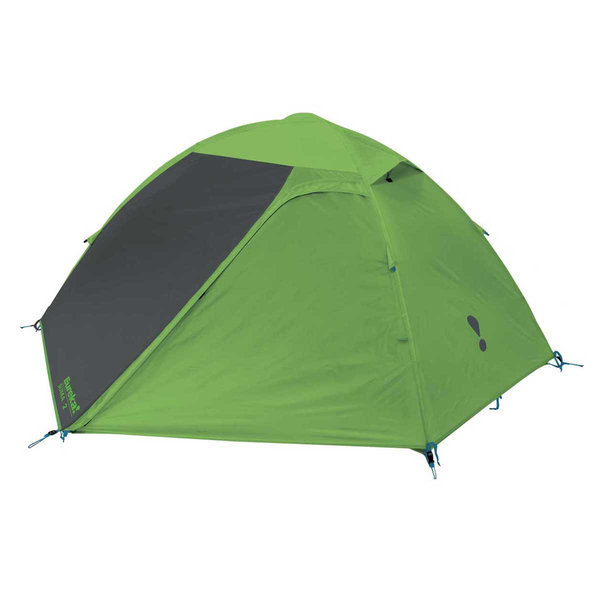Details
A good night’s sleep needs space as much as time. Our lightest backcountry tent, the new Suma optimizes volume with a stripped- down, minimalist one-door design that sets up lightning-fast so you spend less time pitching the tent more time catching z’s.
Floor Area: 3.12 sq m / 33.6 sq ft
Weight: 1.73 kg / 3.81lbs
Vestibule Area: 0.93 sq m / 10 sq ft
-
Gear Loft
-
3 pockets
|
Sleeping Capacity
|
2 |
| Floor Size | 88 in x 55 in (223.5 cm x 139.7 cm) |
| Interior Peak Height | 42 in | 106.7 cm |
| Floor Area | 3.12 sq m / 33.6 sq ft |
| Vestibule Area | 0.93 sq m / 10 sq ft |
| Total Weight | 1.87 kg / 4 lb 2.08 oz |
| Minimum Weight | 1.73 kg / 3.81lbs |
| Vestibules | 1 |
| Doors | 1 |
| Storage Pockets | 3 |
| Gear Hammock | 1 |
| Main Pole | 8.5 mm Aluminum |
| Inner Body Fabric | 68D 185T polyester taffeta breathable |
| Rainfly Fabric | 68D 185T polyester taffeta 1500 mm |
| Mesh | 20D nylon no-see-um |
TENT CARE TIPS
Tent Cleaning
Clean the tent by setting it up and wiping it down with a mild soap (liquid hand soap) and lukewarm water solution. Rinse thoroughly and dry completely. Never use detergent, washing machines or dryers because they can damage the tent's protective coating and seams. After cleaning, be sure the tent is completely dry, especially the heavier, double-stitched areas such as the seams, before storing or mold and mildew are likely to grow.
Clean the tent poles with a soft, dry cloth. This is especially necessary after oceanside camping trips to remove salt spray so the poles don't corrode or stay gritty.
Clean the zippers with a quick dip in water and then dry them off. This is especially important if you've been camping in a location with sand/dirt. If you don't clean the zippers, the sliders will wear out and eventually the teeth will become inoperable.
Tent Seam Sealing
We recommend use of a sealer such as Kenyon Seam Sealer 3 or McNett Outdoor SeamGrip. Be sure to check directions on the side of container for specifics before beginning the seam sealing process.
Seam sealing should be done in a fully ventilated area. Set the tent up or lay the tent out flat. Taut seams allow for even application and penetration of the sealer.
Decide which seams need to be sealed. For example, seams that will be exposed to rain, runoff, or ground level water are a must for sealing, while seams on uncoated nylon or mesh panels won't need treatment. You won't need to seal the seams in the roof or the factory taped seams either. We recommend sealing both floor & fly seams and reinforcements.
Apply sealant to the inside and outside of all exposed seams. Draw or brush the sealant along the seam, spreading it evenly and liberally into all of the needle holes. Several thin layers will work better than one thick layer. Allow 30 minutes to 1 hour for the sealant to completely dry before storing the tent. Twelve hours for SeamGrip®.
Ultraviolet Damage to Tents
Ultraviolet damage to tent fabric is caused by excessive exposure to sunlight. While our fabrics are UV resistant, any synthetic fabric is susceptible to ultraviolet degradation. UV damage will cause nylon and polyester to become brittle and tear easily. Once your tent has UV damage, it is non-repairable, but damage can be minimized by erecting tents on sites where exposure to direct sunlight can be avoided. We also recommend that you use the rain fly even on clear days. It acts as a sunscreen to the tent. A rain fly is both easier and less expensive to replace if damaged.
Color Transfer
Due to the nature of tent fabrics, color can transfer from darker fabric to lighter fabric if two colors are in contact over time when wet, damp, or exposed to the combination of moisture and high heat. This does not affect a tent's performance. To prevent/minimize color transfer from occurring, always make sure that your tent is completely dry prior to packing and storage.
Tent Storage
Make sure the tent is completely dry, then store loosely rolled, in a dry, cool place. To prevent dust from collecting on the tent, cover it with a cloth. This allows the nylon/polyester fabric to breathe.
Ideally, the tent poles should be stored in their fully assembled state. This reduces the tension on the shock cord, prolonging its life. We recommend that the tent bag be used only as a carry sack and not for storage.
General Tent Care Tips:
Use a ground cloth under the tent whenever possible. If you choose, Eureka! has pre-cut sizes. If not, trace the tent on the ground cloth and cut smaller than the tent footprint to avoid having it act as a water collector. Ground cloths are easier and less expensive to replace than torn tent floors
Try not to wear shoes inside your tent.
Bring a small rug or mat to put inside the tent door to wipe off mud and catch sand.
Sweep the tent floor daily to prevent damage from stones.
Do not keep food inside the tent. Hungry critters will chew through the tent fabric in search of a snack.









